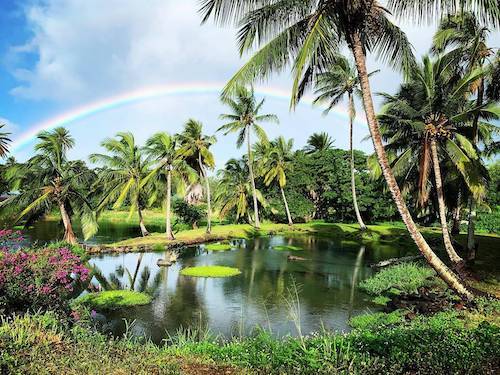
Restoring Ea Middle School Science Unit
Educators in central O’ahu want to immerse students in traditional and next generation science learning in a way that deepens their connection to the place of Hawaiʻi. With this goal in mind, the Leilehua-Mililani-Waialua Complex partnered with BSCS Science Learning to co-design and field-test a new curriculum unit for middle school students.
The resulting science unit, Restoring Ea, is place-based, three-dimensional, and phenomenon-focused. While specifically designed for seventh grade teachers and students in central O’ahu, Restoring Ea could be adapted and used by middle school teachers across the country who are looking to engage their students in meaningful, next generation science learning.
The Restoring Ea unit includes classroom materials and associated professional learning resources. It is now freely available.
About the Unit
Restoring Ea is a place-based middle school science unit exploring management strategies that could be used for the Loko ea fishpond to sustainably feed people and ensure the ecosystem is healthy and pono (balanced). This unit honors and leverages traditional and scientific ways of knowing to create experiences that connect students to ‘āina (land) through investigations of place. Focused on ecosystems and food sovereignty, students begin with an exploration of food shortages during emergencies and learn that Hawai’i imports most of its food, including fish. Students wonder how their kūpuna (ancestors) fed themselves prior to importing food. They learn that loko i’a (fishponds) used to feed many people, and one fishpond, Loko ea, is being restored to improve the ecosystem and feed people. Local teachers and students visit Loko ea to kilo (observe), hear mo’olelo (stories) about her past and present, and participate in stewardship activities. In the classroom, teachers help their students investigate the relationships between the desired fish and other key organisms that live at Loko ea. Students consider the ideal environmental conditions for the desired fish and how changes to the environmental conditions affect Loko ea and her organisms.
This unit leverages BSCS’s FieldScope interactive community & citizen science platform to allow students to investigate environmental data previously collected at Loko ea over time and also to collect additional data themselves.
The National Oceanic and Atmospheric Administration funded the co-design and field-testing of this unit.